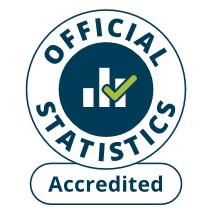Mid-2022 Small Area Population Estimates for 2011 Data Zones
Mid-2022 Small Area Population Estimates for 2011 Data Zones
 Last update: 21 November 2024
Last update: 21 November 2024
Next update: TBC
Note: These small area estimates are the first set based on Scotland’s Census 2022; however, the data zones used are the 2011 data zones. Once the 2022 data zones are available, we will rebase small area estimates from mid-2011 onward, using these 2022 data zones. As a result, this report does not present comparisons with previous years.
|
Report
|
|
Data |
|
| Metadata (PDF 88 KB) |
Charts |
Key Findings:
-
There are 6,976 data zones in Scotland. In mid-2022, 80% of data zones had a population between 500 and 999 people living in them.
-
Most people lived in large urban areas (37%) and other urban areas (34%), compared with accessible rural areas (12%), accessible small towns (9%), remote rural areas (5%), and remote small towns (3%).
-
Younger people are more likely to live in urban areas, and older people are more likely to reside in rural areas. The median age of people in large urban areas was 39, while people in rural areas has a median age of 52.
-
Inverclyde and Glasgow City had the highest percentages of population living within the most deprived Scottish Index of Multiple Deprivation (SIMD) decile (31% and 30% respectively).
-
East Renfrewshire had the highest percentage of population living within the least deprived SIMD decile (37%).
Other Geographies
Population estimates for other areas which are built up from the 2011 Data Zones are available from the other geographies page.
Contact Us
Please get in touch if you need any further information, or have any suggestions for improvement.
E-mail: [email protected]
Lead Statistician: Andrew White
For media enquiries, please contact [email protected]